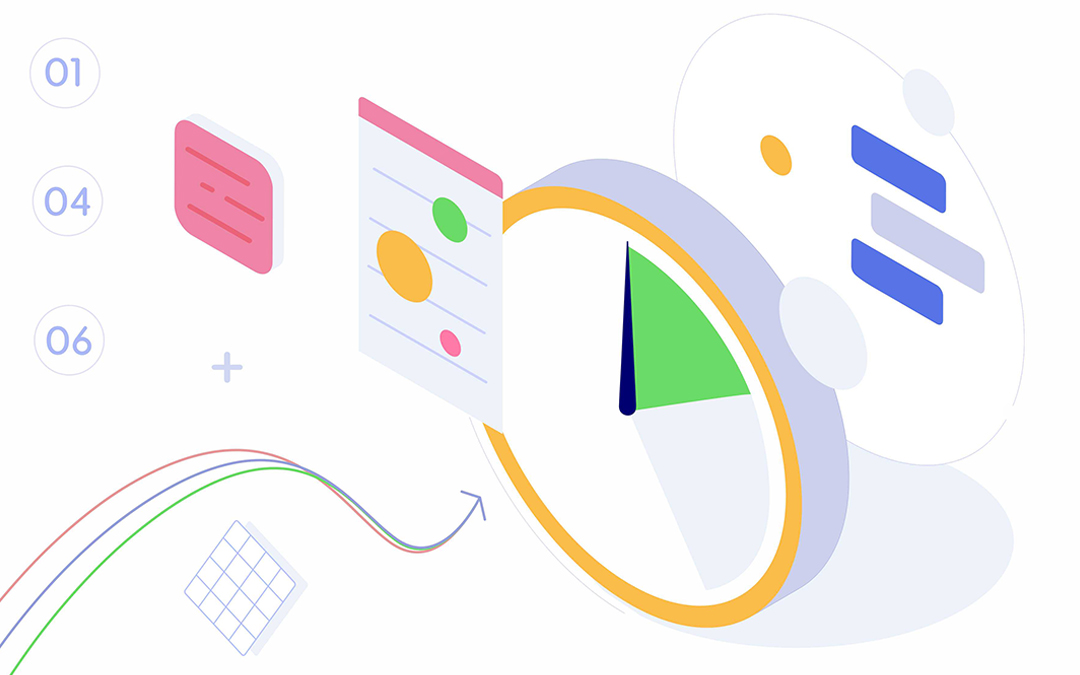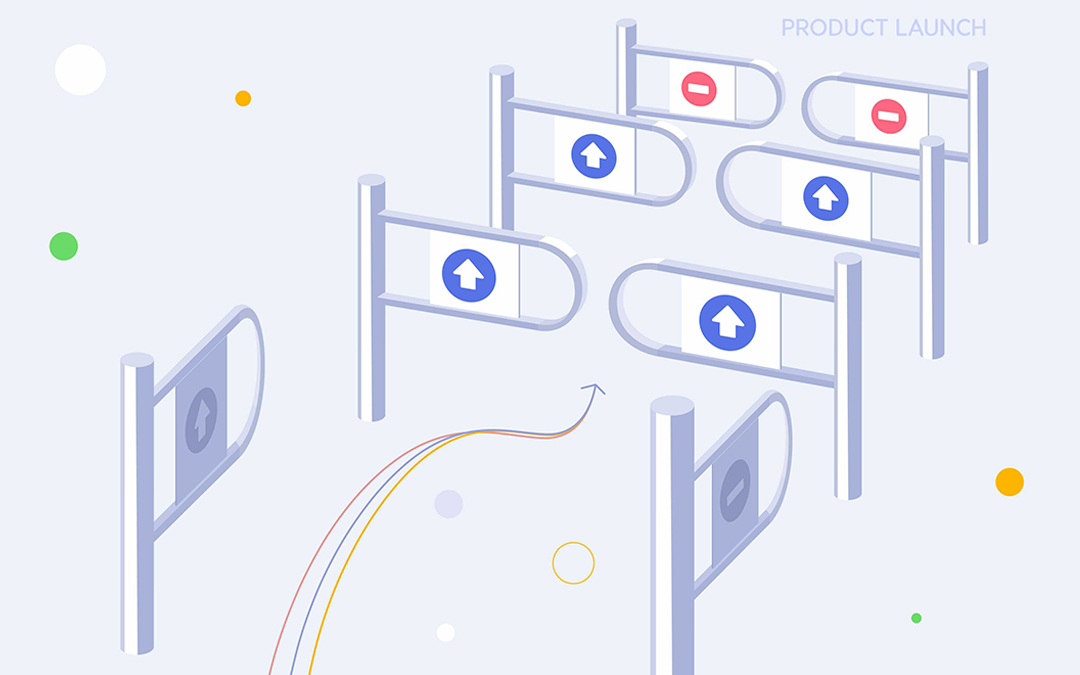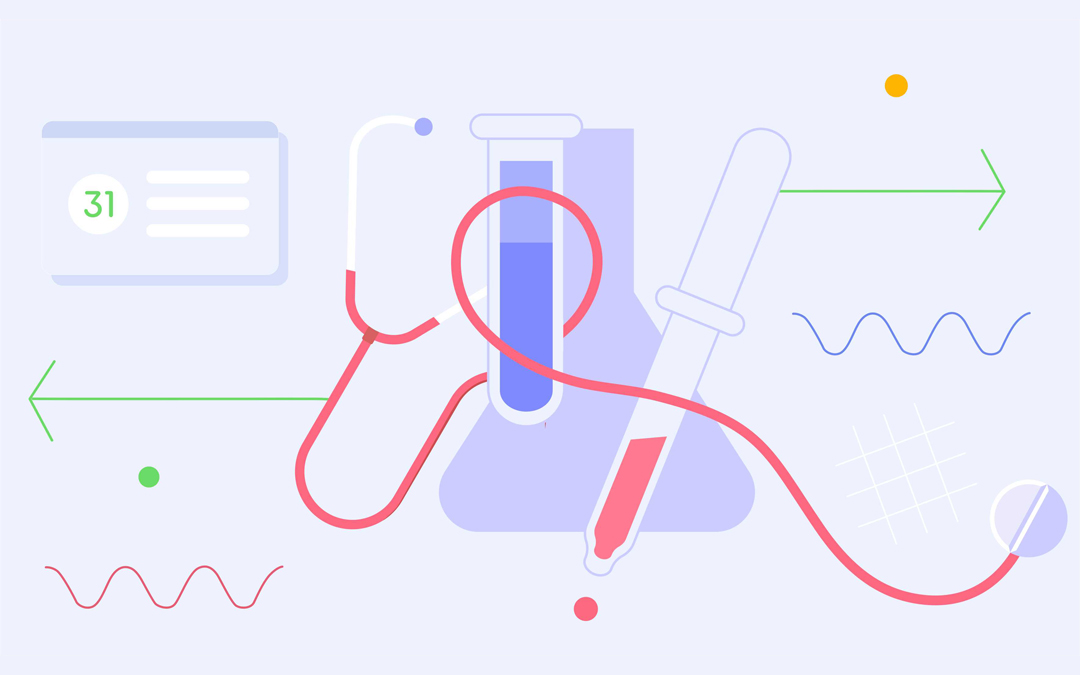There are a variety of approaches and methodologies aimed to increase the effectiveness of managing projects and deliver better outcomes. Each of them comes with specific advantages and disadvantages, which makes them suitable for different industries and different types of projects. In this article, we’d like to dwell upon the phase-gate process. Read further to learn its essence and structure, the types of projects it’s used for, the strong and weak points of the technique, and more.
What is a phase-gate process?
A phase-gate process (also known as a stage-gate process) is an approach to managing projects and developing products, which breaks the whole procedure down into phases separated by gates. The phases correspond to the main steps of product development or other essential stages of project work, while the gates serve as the checkpoints where you can review each completed phase. A phase-gate process is linear, which means that each phase starts only after the previous one is finished, which makes it similar to the Waterfall methodology.
Initially, such an approach was applied to large-scale engineering projects and later became popular with other industries. Currently, the approach is used to manage R&D, product or software development projects or other large and complex initiatives.
What are the phases of the process?
If we speak about the product development projects, the stages of the phase-gate process will be as follows. [1]
- Ideation.
This stage aims to determine the market need and whether you can create a product/services that would meet this need.
- Scoping.
The next stage involves research of the market and existing competitors as well as performing a SWOT analysis – identifying the idea’s strengths, weaknesses, opportunities, and risks. This will give an idea of a project’s feasibility and make it possible to determine its scope.
- Planning.
The name of this phase speaks for itself. In addition to creating a development plan, this stage involves writing a business case that will provide the justification for developing a product as well as performing a final feasibility study.
- Development.
This is the phase of executing the plan and creating the product along with the marketing plan for it.
- Testing and validation.
This stage aims to determine whether the developed product works properly. This embraces in-house testing (by developers and other team members) and field testing performed by customers.
- Product launch.
After all, the company can start selling the developed product. It’s also important to conduct a review to make sure the deliverable works as intended and determine whether any adjustments are required.
These were the phases applied for the product development projects. But if you manage the other types of initiatives, you can break them down into other phases applicable to their specificity and scope of work. You can use a work breakdown structure to divide a project into stages.
Read more: Creating a Work Breakdown Structure: What You Need to Know
What happens at the gates?
Each gate involves the review of the previously completed phase and making a decision regarding moving forward.
To assess the phases, project managers can assess the quality of the work performed, the business rationale for proceeding with the project, human and material resources’ availability, or other criteria significant for further work on a project.
Having assessed the work performed, a project manager should make one of the following decisions:
- Go (if the phase has achieved the expected outcomes and further work on a project is feasible);
- Hold (if it’s better to postpone the project but return to it later, e.g., because there are projects with higher priority for the moment);
- Kill (when the phases completed haven’t met the expectations and there’s no sense to continue the project);
- Recycle (when some adjustments should be made to the current phase to be able to proceed to the next one).
As we see, the review performed at the gates along with further decisions can be applied to every project type.

What are the advantages of the phase-gate process?
The clear structure of a project
The phase-gate process orders the work on a project into a clear structure, which is predictable and easy to track.
More reasonable resource utilization
When there are multiple development projects in the pipeline with a shared pool of resources, gate reviews make it possible to drop out the projects that won’t be able to bring the expected outcomes, and in such a way utilize the available resources more intelligently.
Timely detection of problems
Conducting assessments at the gates helps identify bottlenecks and other problems so that you can timely adjust the situation before it affects other project elements and consider this experience when proceeding to further stages.
Minimized risks
The phase-gate process makes it possible to reduce company-level risks, e.g. wasting resources on projects that aren’t in line with the business strategy or those that won’t bring the expected outcomes, etc.
High quality of the outcomes
Finally, when you eliminate bottlenecks in the workflow, reduce inefficiencies, and fix problems timely, the quality of the final deliverable is expected to be high.
Are there any limitations to the phase-gate process?
Like any other project management methodology, a phase-gate process has its drawbacks. The ones listed below will be relevant for product development projects.
Long time-to-market
The most significant one is that the deliverable becomes available to the client only at the end of a project. This is unsuitable for long-term projects. For example, the development of Lockheed Martin’s F-35 fighter jet took twenty solid years [2]. Taking into account the present-day pace of technology development and changing customers’ needs, such a long time-to-market will result in delivering a product that won’t meet the customers’ expectations.
A lack of customer involvement
Without customers’ feedback, it’s really challenging to create a product that meets their requirements to the full.
Late testing
Finally, when you can test the developed product only almost at the end of the project lifecycle, it can result in major unexpected challenges – the deliverable may not work properly, which will mean that the project has failed to deliver the expected output.
What is the role of a resource management solution in the phase-gate process?
It’s no secret that most organizations leverage software solutions to streamline their product development and/or project management as well as increase resource efficiency. They can also be used in combination with the phase-gate process.
Let’s consider how Epicflow, a multi-project resource management tool, can increase the effectiveness of this methodology through the example of conducting gate reviews.
Providing performance data on both project and resource levels
When performing gate reviews, performance analysis will give an idea of work progress and whether there are any bottlenecks that have to be eliminated.
Epicflow has features that show the state of every project running in a company; in addition, you can track the amount of completed vs remaining work and budget. Also, when some of the projects in the pipeline require special attention, a project manager will immediately learn about this.
But what is even more important is conducting resource performance analysis – it allows a project manager to timely spot bottlenecks that will later affect the project level. Epicflow’s Historial Load Graph makes it possible to identify them in a few clicks.
So with Epicflow, you won’t have to gather myriads of information on project and resource performance before conducting gate reviews, the relevant data for a comprehensive analysis is always at your fingertips.
Running simulations for more effective decision-making
The other important part of gate reviews is making decisions regarding further work. There’s always uncertainty about how different project management activities will affect further workflow. Epicflow can eliminate this uncertainty by providing an opportunity to perform scenario analysis. In its What-if Analysis mode, you can make various changes to the project environment and see their consequences. For example, what will happen if we continue to work on this project, hire extra people, stop this project, reassign resources, etc. When you make decisions that are baked with the data, their effectiveness increases, and so do the chances for successful project delivery.
These were just some of Epicflow’s capabilities that contribute to the effectiveness of the phase-gate process. Learn about more opportunities to ensure smooth project flow and their successful completion by scheduling a call with our experts.
Conclusion
Taking into account all the advantages and disadvantages of the phase-gate process, we can conclude that it’s not a one-size-fits-all solution for any project type in every industry. However, when applied under the right circumstances, it can minimize risks, contribute to more intelligent resource utilization, and help you address the changes and challenges arising in the workflow.
Even if you don’t work on product development projects, the idea of performing gate reviews with the assessment of the work performed, its alignment with the project goals, and the feasibility of further work is really worth attention.
References
- A Guide To The Phase-Gate Process in Project Management. (2023). Retrieved from: https://www.indeed.com/career-advice/career-development/phase-gate-process
- Mallory, G. et al. (2022). A Need for Speed in Aerospace and Defense. Retrieved from: https://www.bcg.com/publications/2022/a-and-d-industry-need-for-speed







